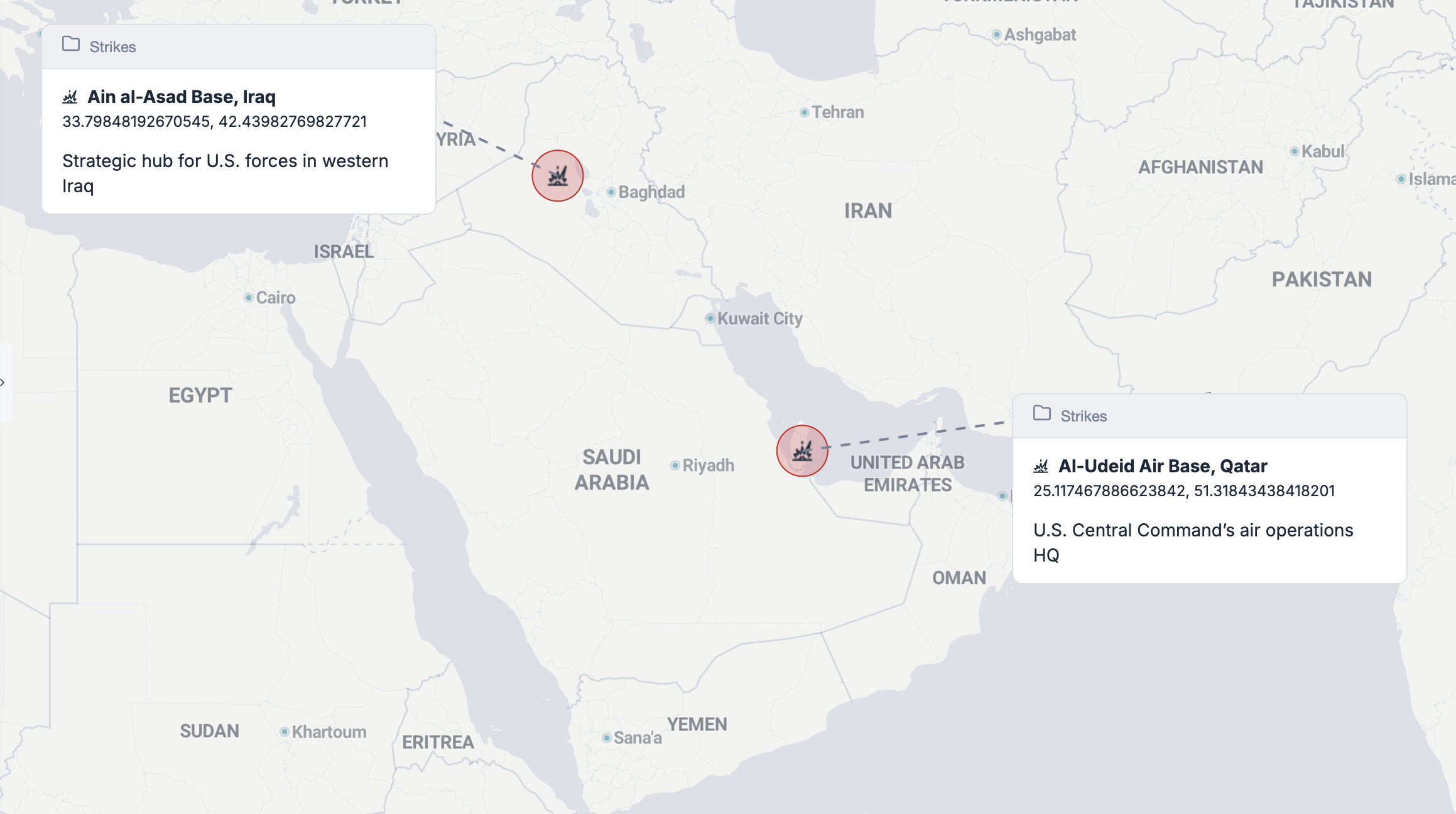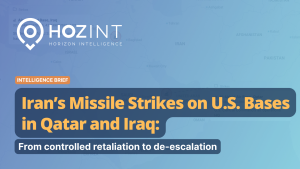Key Points
- On 23 June 2025, Iran launched missile attacks on U.S. bases in Qatar and Iraq, targeting the Al-Udeid and the Ain al-Asad bases in retaliation for American airstrikes on Iranian nuclear facilities.
- Al-Udeid Air Base, the largest U.S. military installation in the Middle East, was the main focus of the operation dubbed Victory Message.
- No casualties were reported, but the attack triggered region-wide airspace closures and elevated military readiness.
- Qatar condemned the attack as a violation of sovereignty, despite Iran’s insistence that it did not target Qatar itself.
- Shortly after the strikes, the United States announced a “complete and total” ceasefire with Iran, signalling a rapid shift toward de-escalation.
Incident Overview
What: Iran executed a retaliatory missile strike on U.S. military bases in Qatar (Al-Udeid) and Iraq (Ain al-Asad) in response to American bombing of key nuclear facilities on 22 June.
Who: Carried out by the Iranian military under the operation name Victory Message; the U.S. and Qatar were the impacted parties.
When: The strikes occurred on 23 June 2025, with the ceasefire announced hours later.
Where:
• Al-Udeid Air Base, Qatar: U.S. Central Command’s air operations HQ.
• Ain al-Asad Base, Iraq: Strategic hub for U.S. forces in western Iraq.
Why: To assert deterrence and retaliate for the U.S. strike on Fordow and other nuclear sites.
How: Iran fired multiple medium-range ballistic missiles. While Iranian sources claimed six missiles were launched, U.S. and Qatari sources reported between 14 and 19; all were intercepted.

Analysis
The Iranian missile strikes on U.S. military bases in Qatar and Iraq was a retaliatory, yet limited, attack that concluded a phase of escalation in the regional conflict between Iran, Israel and the U.S. In launching the Victory Message operation, Iran retaliated directly against U.S. forces without inflicting casualties, thereby sending a calculated signal of capability and resolve while limiting provocation. Al-Udeid Air Base was a symbolically powerful target, housing over 10,000 U.S. personnel and serving as the nerve centre of regional air operations. By also targeting Ain al-Asad Base in Iraq, Iran reinforced its broader regional message, aimed at showcasing reach and deterrence.
Despite its aggressive optics, the strike appeared carefully calibrated. Western intelligence had already picked up indicators of an imminent attack, prompting the U.S. and UK to issue shelter-in-place warnings to citizens. Qatar pre-emptively closed its airspace, and military and civil aviation diverted from Doha’s Hamad International Airport, one of the busiest global hubs. Importantly, Iran communicated in advance with both Qatari and U.S. officials, reinforcing the sense that Tehran sought deterrence, not mass casualties.
This deliberate restraint set the stage for a ceasefire declaration by U.S. President Donald Trump shortly after the missile strikes. His post on Truth Social announced that hostilities would “end upon the 24th hour,” with both sides given time to wind down operations. The sequence strongly suggests the Iranian strike served as a final retaliatory gesture, fulfilling a domestic and strategic need before a diplomatic off-ramp could be implemented.
Qatar’s condemnation of the attack as a violation of sovereignty reflects its delicate position, caught between its U.S. alliance and Iranian proximity. However, its response is expected to remain diplomatic rather than military. Meanwhile, the temporary closures of Bahraini, Kuwaiti, and Saudi airspace, along with elevated alerts in Syria and Iraq, illustrate the broader regional tremors caused by the incident.
Implications for aviation
The Iranian missile strikes on U.S. military bases in Qatar and Iraq significantly disrupted regional and international aviation. Prior to the attack, Qatar’s Civil Aviation Authority proactively closed its airspace. This led to widespread diversions of flights bound for Hamad International Airport (DOH), one of the world’s top 10 busiest international airports, handling around 140,000 passengers daily. Flight tracking services recorded 100 diversions in the hour leading up to the attack.
Additional airspace closures followed in Bahrain, Kuwait, and Iraq, with countries like Saudi Arabia issuing temporary restrictions. Bahrain sounded air raid sirens, further contributing to regional air traffic uncertainty. Commercial airlines rerouted over Saudi and Omani corridors, resulting in increased fuel costs, delays, and operational disruptions across long-haul routes, particularly between Europe and Asia.
Major carriers operating in the Gulf, including Emirates, Qatar Airways, and Etihad, implemented contingency plans, with several suspending operations into affected airspace. The temporary closure of DOH and diversions to alternate airports led to logistical bottlenecks and mounting insurance and rerouting expenses.
These events underscore the acute vulnerability of critical aviation infrastructure in the Gulf to geopolitical conflict.
Forecast
- Ceasefire conditions are likely to hold in the short term, barring action by non-state proxies or rogue factions.
- Qatar and other Gulf states will reassess military coordination protocols, especially regarding airspace security and early warning.
- Civil aviation risk will remain elevated, though operational normalisation is expected if the ceasefire endures.
- Iran’s regional posture is likely to harden, using the post-strike ceasefire as a platform for domestic messaging and diplomatic leverage.




